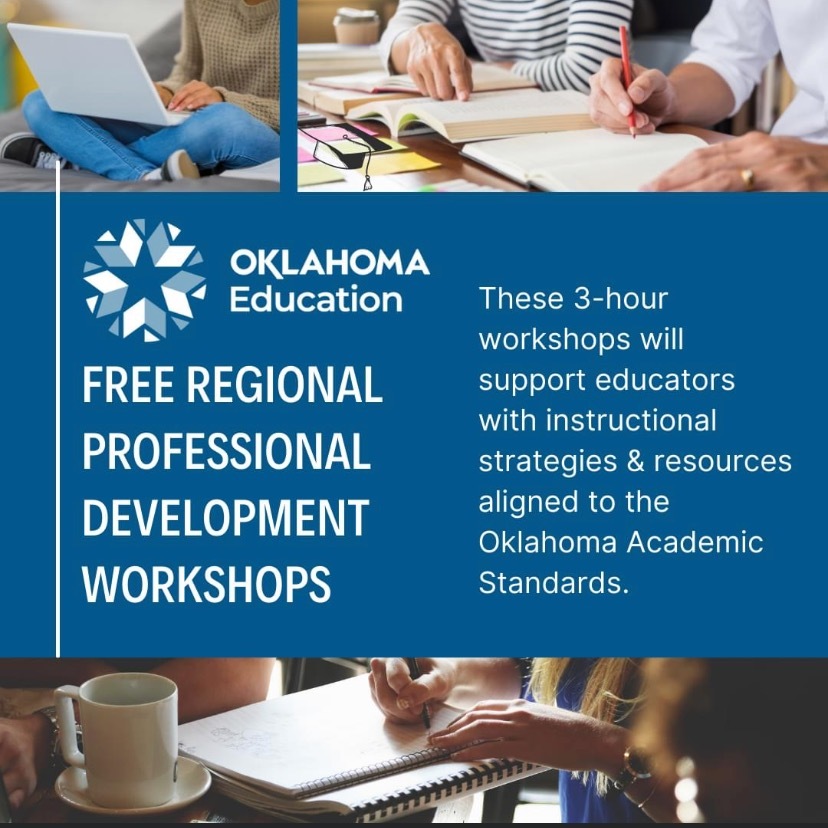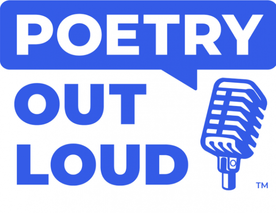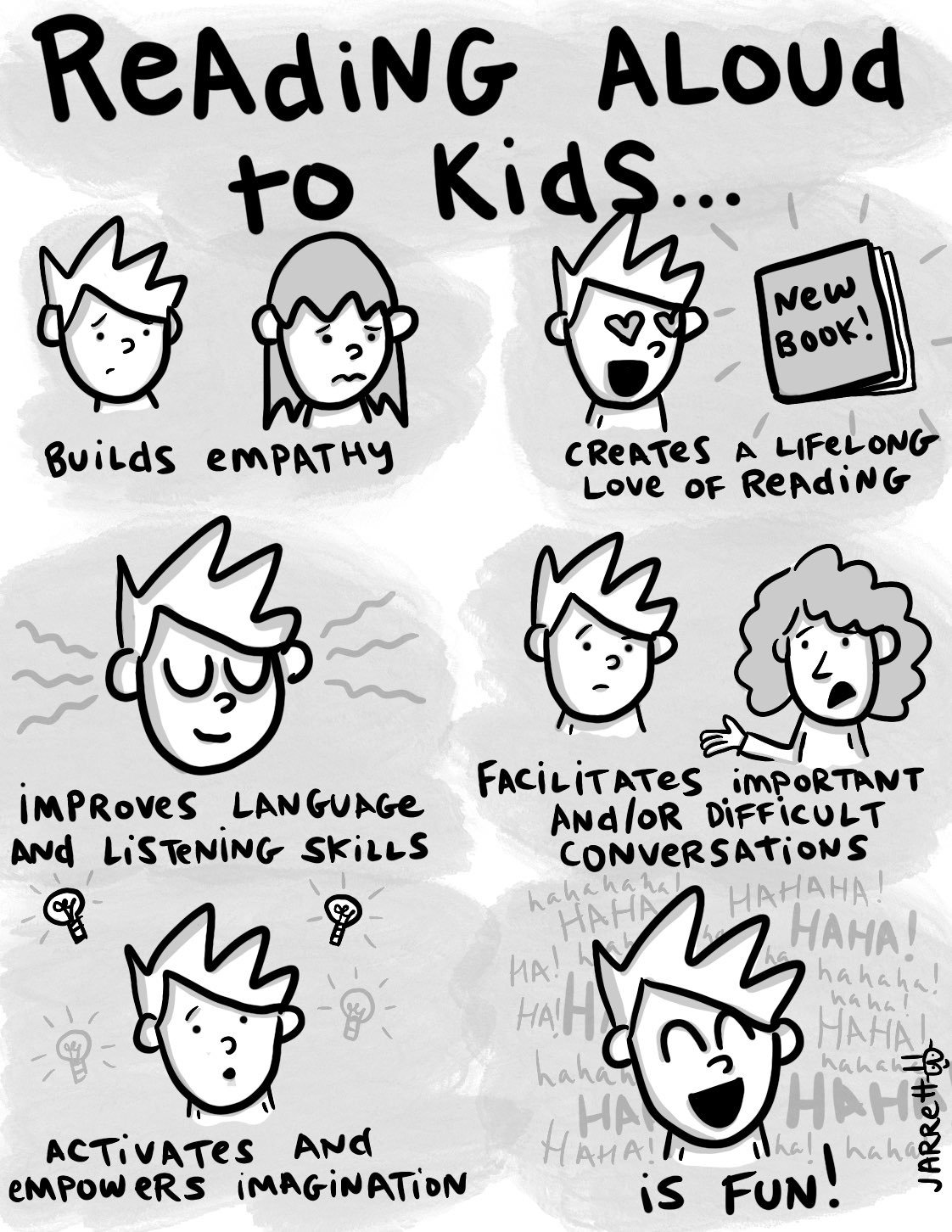September 2021
In this issue:
 The OSDE is excited to announce free, curriculum and instruction professional learning workshops for the 2021-22 school year. These three-hour workshops will be held in five different regions of the state and are designed to support educators with effective instructional strategies and resources aligned to the Oklahoma Academic Standards for English Language Arts. Session titles, descriptions, dates, and locations are listed below.
Please note that added safety measures are being taken at each location to mitigate the spread of Covid-19. Each session has been designed to provide ample spacing for participants, and tables and chairs will be cleaned prior to session start times. Mask wearing will be highly encouraged, and additional measures will be implemented throughout the session to allow participants to feel comfortable while engaging in professional learning activities.
Shifting and Accelerating Instruction with the Revised Secondary ELA Standards
Participants will study the 2021 Oklahoma Academic Standards for English Language Arts, as well as the corresponding crosswalks, vertical progressions, and revised appendix. Participants will also determine how to braid objectives into lessons for accelerated instruction that support social-emotional learning and English learners.
Dates and locations for in-person workshops are listed below. Each in-person workshop will begin at 9:00 a.m. and end at noon. Register at one of the links below, and be sure to select the Secondary ELA option on the Eventbrite registration.
For those unable to attend the in-person workshops, a condensed virtual option will be available, recorded, and published. The virtual workshop for secondary ELA will take place on Tuesday, October 5, from 6:30-8:00 p.m. To register for the virtual event, click here.

Poetry Out Loud is a poetry recitation competition for high school students. It encourages students to learn about great poetry through memorization and recitation while helping students master public speaking skills, build self-confidence, and learn about literary history and contemporary life. Students compete at the school level, with the school winner advancing to the state contest. The top two finalists from the state contest win cash prizes for themselves and their schools. The state winner receives a trip to the national contest in Washington, D.C. in Spring 2022.
When I taught creative writing, I gave my high school students the option to participate in this contest. Some students gave it a shot and enjoyed participating. If you feel that you are too busy to organize this contest as your school site, reach out to your drama or speech and debate teacher to see if they might be interested in helping.
Earlier this year, Poetry Out Loud crowned the 2021 winner: Rahele Megosha of South Dakota. Here she is on the Poetry Out Loud YouTube channel, reciting "Fairy Tale With Laryngitis And Resignation Letter" by Jehanne Dubrow.
Important Dates
-
December 1, 2021: School Registration Deadline
-
November 1, 2021 – February 9, 2022: School Contest Window
-
March 8, 2022: State Contest at the University of Central Oklahoma
-
April 25-27, 2022: National Contest in Washington, D.C.
To learn more, visit www.okaplus.org/poetry-out-loud or contact state coordinator Carrie Bond at cbond4@uco.edu.
This project is supported by the Oklahoma Arts Council, which receives support from the State of Oklahoma and the National Endowment for the Arts. Oklahoma A+ Schools Institute administers the state competition.
Article Connection
Eileen Murphy shares her inspirational Poetry Out Loud story in her article "Against Slogging: Engaging Poetry in the Classroom."
|
 The Poetry Foundation has excellent advice on how to bring your poetry lesson plans to life with articles and other resources from their extensive Learn section. Instead of inundating you with multiple links, I'm pulling some excerpts from five articles with excellent insight.
Carol Jago on sharing our uncertainties
For example, I have read Joy Harjo’s poem “She Had Some Horses” many times, and for the record, I have never understood it. I do, however, respond with emotion to its extraordinary beauty. This beauty makes me return to the poem again and again. Its repetition is mesmerizing. I feel the same way about her poem “Praise the Rain.” Why should we praise the hurt or the baby’s cry? Why praise crazy? Why praise sad? The poem raises many more questions than it answers. By sharing our uncertainties with students, we demonstrate that even experienced readers of poetry puzzle over lines and struggle to understand the poet’s intent. Maybe sometimes we can allow poetry to bewilder us. Instead of fighting that bewilderment, or diagnosing our emotional responses, we can let it trigger our imaginations.
Jack Collom on imitation
Aristotle said that one of the two ways to learn is by imitation. Look at how poets write—learn from them. Learn to recognize each poet’s individual techniques and tricks and common themes and, most of all, have fun. It’s like when you’re learning to dance—you get behind the dancer and copy his or her steps. That’s how learning from great poems works.
Discovering which poets you like is a process of self-discovery. You are what you like. Then you can use what you’ve learned you love about poetry in your own poems. The value of a poem is what you choose from it, what strikes you. Discover your own standards and procedures for critical evaluation. Guide your students to do the same. Sometimes it is up to your sense of humor or insight to find something to remark upon in a poem that is not immediately clear to the reader. Sometimes it’s the element of surprise—a memory of love, or a recognition of a shared history—when suddenly, the poem changes everything. People cannot write poetry together and remain strangers.
Stephanie Burt's Top 10 List
- Teach what you like.
- Do not proceed chronologically.
- Give students a sense of agency: Let them pick poems (from among the poems you choose).
- Remember that your students’ tastes already differ from one another.
- Do not fear paraphrase, and do not fear old poems (though students do).
- All poems raise questions; only some have answers.
- Poetry is an art form.
- Poems first, lives and contexts later (if at all).
- Encourage students to read more than you assign.
- Major poets eventually reveal themselves.
Eileen Murphy's two go-to writing prompts
Found poems, which don’t require generating text so much as working with it, connect the reader to the writer in other interesting ways. In a found poem, for example, students find a 50- to 100-word passage of prose, highlight striking words, and arrange them into a poem. This brief exercise engages students in critical reading and offers snippets of poetic language quickly. See the joint NCTE/IRA site, ReadWriteThink.
“Where I’m From” by George Ella Lyon makes a great read-aloud, and the repetition of the stem sentence/catalog of images acts a great template for student writing.
Eileen Murphy on starting class with poetry
Dr. Janet Allen, the acclaimed reading specialist, believes in beginning every class with a read-aloud. Poetry is delightful to hear. And it’s, well, short! What a wonderful way to greet students. It also allows for plenty of opportunities for authentic responses to literature, the first step in developing a level of comfort that will build confidence for more sophisticated literary analysis later. Offer a recitation (super impressive) or a rehearsed read-aloud; play an audio, video recording, or an animation, or have a student perform. Ask students to use their own voices to intone a text and discover its meanings. As a beginning to class time, poetry out loud can act as a strange new appetizer, introducing a theme for the day (“Much Madness is divinest Sense—” before a Hamlet discussion), giving important background information for another reading (“The Man He Killed” before a piece of The Things They Carried), or leading students straight into a rich experience of working with the text. It doesn’t take much time, and no analysis is required to use poetry to lift and drop a question on a young writer’s plate. I have taught the most astute and the most struggling students, and none of them ever tire of it.
Eliciting initial student response is the best way to begin. Often I simply ask students to mark a question mark, a heart, or an exclamation point next to lines or phrases that strike them (curious, loved it, so true). Having students use these initial markings to generate two or three interpretive questions or one descriptive sentence can ignite a robust discussion of a poem with any group of students, because this approach offers texts as public works of art, not proof of a teacher’s interpretation or the subject of distant, erudite discussions.
Allowing students to generate the discussion is the key. All responses that respect the facts, all the facts, and nothing but the facts of the text are fair game, even if it means students trash the poem you’ve presented. The way you repeat, affirm, summarize, and connect student responses will model the more sophisticated descriptions of literature we hope our students master, but when they feel empowered to respond authentically, students can spring comfortably from this poetry base to more sophisticated literary analysis across genres.
 With a panel of celebrated authors—Elizabeth Acevedo, Kacen Callender, Jenny Han, Jason Reynolds, Adam Silvera, Angie Thomas and Nicola Yoon—Time magazine recently shared the 100 most compelling, enlightening, and influential young-adult books, in chronological order beginning in the 1800s. Read the list, and click on each book for a summary.
The oldest book I have read from the list is The Catcher in the Rye by J. D. Salinger, published in 1951. I taught Lord of the Flies to my very first group of sophomores. I read To Kill a Mockingbird when I was a junior in high school, and I taught it for years to my sophomores. I read Roll of Thunder, Hear My Cry as a required novel when I was in fifth grade. I taught The Westing Game and The Giver to my seventh grade students and The House on Mango Street and Stargirl to my eighth grade students. I've also read Holes, Monster, Speak, Feed, Persepolis, The Book Thief, American Born Chinese, The Hunger Games, , The Fault in our Stars, and Brown Girl Dreaming. I used excerpts from Aristotle and Dante Discover the Secrets of the Universe and Simon vs. the Homo Sapiens Agenda to teach sentence fluency and voice in my 2019 EngageOK presentation on the Six Traits of Writing.
Some Oklahoma teachers might take issue with the fact that S.E. Hinton's classic YA book, The Outsiders, is not on this list. That is what happens when a finite list is made. Something will be excluded. Emily Nussbaum, the former television critic for The New Yorker, refused to make Top 10 lists of the best TV shows of the year for that reason. She felt ten wasn't enough for all the great TV she had watched. Her 2019 "Top 10" list actually has twenty shows with fifteen more as honorable mention!
What lists like this can do is open up conversations about what constitutes a great book. Students might be interested to see how many books from this list they have read. They may also want to make their own best book list after seeing what is included and excluded from this list. For students, 100 titles might be too much, but they could make a top 10 list.
Reflection Questions:
- How many of these Top 100 books have you read?
- Have you taught or do you currently teach any of these books?
- Is your favorite young adult book missing from this list?
- Have you seen the movie(s) based on these books?
*Please note that the books on this list do not represent an endorsement by the Oklahoma State Department of Education. Consult your local district about any curriculum decisions.

In a short essay for TIME magazine, Jason Reynolds writes about the power of young adult literature:
"The function of story, especially for young people, is to bear witness to their lives, marking them as valuable and seen and part of something.
"We experience this all the time in the stories we tell each other through casual conversation—Your grandma does that too?!—but the stories we read in books are ones we can experience over and over again. They serve as anchors, wings, compasses, road maps, magnifying glasses."
Read the full article.
|
 Author-illustrator Jarrett Lerner created the above comic. He reminds us, "You can neither be too young nor too old to benefit from (and enjoy!) being read to. It has been shown that infants just days old can benefit from being read to, and surely you know plenty of adults who enjoy (or are maybe even OBSESSED with) audiobooks. And those doing the reading aloud benefit too. For instance, it has been shown that kids can gain reading confidence and improve their skills even by reading to their dogs and cats."
Moreover, "literacy experts such as Nancy Atwell, Lucy McCormick Calkins, and Jeffrey Wilhelm advocate ideas such as daily read-alouds," according to AP teacher Eileen Murphy.
In your secondary ELA class, you might read aloud any number of texts to your students: a poem, a short story, a novel excerpt, even a picture book. Tying the read-aloud to another text later on in the lesson makes the read-aloud even more meaningful.
Reflection Questions:
- Do you practice your read-aloud before reading it to students?
- How often do you read aloud to your students in your secondary ELA classroom?
- How would your students describe your reading-aloud skills?
- Do your students have access to the text you are reading aloud to them?
If you know a new ELA teacher in your school and/or district, please forward this newsletter to them and encourage them to subscribe. In November, the OSDE will receive updated teacher contact information, so sharing the newsletter and encouraging new teachers to sign up will help communication. Thanks!
Reading Quote
 Writing Prompt
Read the quote above from Jason Reynolds.
Pick a story from a book that has served as an anchor, wings, compass, road map, or magnifying glass for you. Explain how that metaphor is true for you and your life.
Upcoming Dates
|